Are you a publisher or a website owner trying to find ways to generate passive income? Are you overwhelmed by the options and not sure where to start?
If your answer is yes, you’re in the right place! Advertising is a crucial step in growing your online business, and the industry is thriving with endless opportunities to earn substantial income. As you delve into this field, you’ll encounter various models and advertising methods. One of the most effective and widely used models is Pay-Per-Click (PPC).
In this article, we will focus on PPC ad networks and how you can leverage them to increase your income as a publisher. Let’s dive in!
Why PPC Ad Networks Matter
When we talk about the best PPC ad networks, Google instantly comes to mind, and for a good reason. Google dominates the PPC advertising landscape and is one of the highest-earning ad networks available. However, getting into Google’s AdSense program isn’t easy—you’ll need to meet specific requirements to have ads displayed on your website.
While Google is king, there are other PPC ad networks that can help you monetize your website effectively, even if you’re not eligible for Google AdSense.
Before we list the best PPC ad networks, let’s briefly explain what they are and how they work.
What Are PPC Ad Networks?
PPC ad networks are platforms that connect advertisers with publishers (website or blog owners) to display ads. These networks work on a commission-based model where publishers get paid for every click an ad receives on their site.
Advertisers use ad networks to manage their campaigns, bidding strategies, targeting, and optimization. This model is mutually beneficial, as advertisers only pay when users click on their ads, while publishers earn revenue from each click.
How Do Ad Networks Benefit Publishers?
Ad networks simplify the process of finding relevant ads for your website by acting as an intermediary between publishers and advertisers. Instead of hunting for advertisers yourself, ad networks find them for you, negotiate ad placement and pricing, and match contextually relevant ads to your content.
By using PPC ad networks, publishers can easily monetize their traffic without needing to invest much time or energy. This is why PPC ad networks are a go-to choice for publishers looking to boost their earnings.
Two Main Models of PPC Ad Networks
There are two primary models for PPC ad networks:
- Flat-rate PPC: In this model, the advertiser pays the publisher a fixed amount for each click. Publishers usually have a rate card outlining the pay-per-click rate for different sections of their site.
- Bid-based PPC: Advertisers bid for ad space based on specific keywords or keyword groups. The advertiser with the highest bid gets the ad placement. This is typically done through an auction managed by the ad network.
Why PPC Ads Work So Well
Did you know that nearly 60% of users don’t even realize when they’re looking at paid ads? This makes PPC advertising especially effective, as it seamlessly integrates with other content on your site. Both advertisers and publishers benefit from PPC ads because advertisers only pay when they receive traffic, and publishers earn revenue for each click.
Moreover, PPC campaigns offer measurable results, making it easy to track impressions, clicks, and conversions. This level of transparency and accountability makes PPC one of the most popular models in online advertising today.
Best PPC Ad Networks in 2026:
Now that you’re aware of what a PPC ad network is, it’s time to determine which one would perform effectively for your advertising approach. The advantages of choosing a Google Ads substitute include less competition, a reduced cost per click, and the ability to target particular or niche audiences.
This list of theBest PPC Ad Networks is not all-inclusive, but it describes the range of alternatives and what every platform offers for2026.
- EpicAds
- Mylead
- Google Adsence
- Microsoft Advertising (Bing Ads)
- LinkedIn Ads
- Instagram Ads
- Pinterest Ads
- Twitter Ads
- Partners.House
- AdRecover
- AdRoll
- Reddit Ads
- RevContent
- Outbrain
- Taboola
1. EpicAds.Net – #1 Rated Ad Network For Publishers & Advertisers:
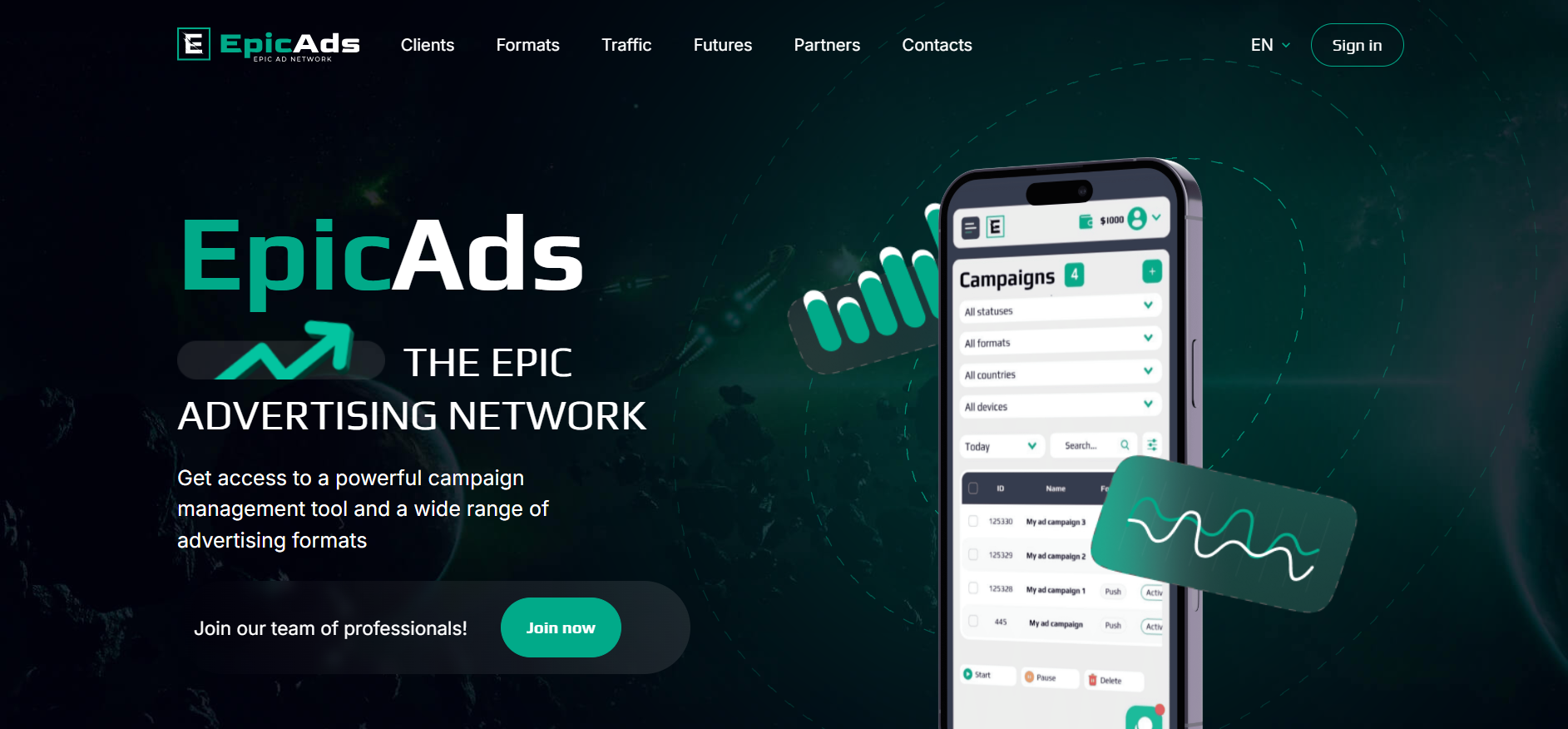
About EpicAds.Net:
EpicAds.Net, launched in 2023, is a next-generation advertising platform designed to connect publishers and advertisers through efficient monetization and precise audience targeting. The network supports multiple ad formats such as Push, In-Page, and OnClick, enabling publishers to maximize revenue and advertisers to reach quality traffic. It serves major verticals like Dating, Nutra, Crypto, Gambling, and Sweepstakes, with strong AI-driven optimization and anti-fraud protection to ensure genuine engagement and high returns.
For Publishers
EpicAds.Net helps publishers monetize their traffic easily with its simple interface and detailed performance tracking. It ensures high fill rates and consistent income through multi-format ad support and traffic-back options. The platform also offers ready-made landing pages and real-time analytics to enhance performance. Weekly payouts start from $50, and users can earn an additional 5% lifetime referral bonus. Dedicated support and account managers are available 24/7 to guide publishers and optimize their campaigns.
Payment Details:
-
Payment Methods: PayPal, Wire, Capitalist, USDT (TRC20)
-
Cycle: Weekly & Bi-weekly
-
Minimum Payout: $50
-
Terms: Net-7 or Net-15
For Advertisers
EpicAds.Net enables advertisers to run CPC and CPM campaigns with precise targeting by country, device, browser, and time of day. The platform supports microbidding, A/B testing, and creative import from EpicSpy for flexible campaign management. Campaigns are approved within 30 minutes, and real-time stats allow advertisers to track conversions and performance instantly. With its AI-powered optimization, fraud detection, and access to top-performing niches, EpicAds.Net is ideal for achieving high-quality leads and measurable ROI.
2.Mylead:
MyLead is a global affiliate and PPC network founded in 2014 and now active in more than 160 countries. As of 2026, it offers over 5,000 affiliate programs across multiple niches, including finance, e-commerce, crypto, gaming, and health. The platform supports various payout models such as CPA, CPL, CPS, PPI, and COD, giving affiliates the flexibility to choose what best suits their marketing approach.
MyLead provides advanced affiliate tools like Smartlinks, Content Lockers, Deeplinks, and API integrations for automated tracking and reporting. It is designed to support both beginners and professionals, offering training programs and 24/7 support to help new affiliates grow quickly. Its interface is beginner-friendly yet powerful enough for experienced marketers looking to scale campaigns efficiently.
The network’s main goal is to create a global ecosystem of advertisers and publishers who can mutually benefit through performance-driven marketing. With transparent reports, fast approval times, and numerous monetization opportunities, MyLead has become one of the most reliable affiliate networks worldwide.
Payment Details:
-
Minimum Payout: $20
-
Payment Methods: PayPal, Skrill, Bank Transfer, Revolut, WebMoney, Bitcoin, and other cryptocurrencies
-
Payment Cycle: Withdrawals are typically processed within 48 hours and can take up to 14 business days depending on the method used
3.Google AdSense:
The best PPC ad network available in 2026 is still, without a doubt, Google Ads. Known for its unmatched reach and precision targeting, Google Ads continues to dominate the digital advertising landscape. Whether you’re a small business, eCommerce store, or multinational brand, Google’s network can accommodate your marketing goals through a variety of campaign types, including Search, Display, Video, Shopping, and App campaigns. Its powerful AI-driven bidding and audience segmentation make it easy to reach the right customers at the right time.
For publishers, Google AdSense remains one of the most trusted and profitable platforms. AdSense automatically serves relevant, high-quality ads on your website and optimizes placements to ensure maximum revenue potential. With its intelligent contextual targeting and ad customization options, publishers can effortlessly generate passive income while maintaining a clean, user-friendly experience. The platform’s ease of integration and deep analytics make it ideal for both beginners and professionals.
Google Ads also provides advertisers with access to the Google Display Network (GDN), which spans millions of websites, YouTube channels, and mobile apps. This extensive ecosystem gives advertisers global exposure and advanced tools such as performance insights, Smart Bidding, and conversion tracking. Whether your goal is sales, leads, or brand awareness, Google Ads delivers measurable and scalable results.
Placements:
Search results on Google, Display Network websites, YouTube, mobile apps, and Google Shopping
Ad Formats:
Text, responsive display ads, image banners, and video ads
Pricing:
Primarily Cost-per-Click (CPC); also supports Cost-per-1,000-Impressions (CPM) and Cost-per-Acquisition (CPA) models
Pros:
- Unmatched global audience reach
- Advanced AI optimization and smart bidding tools
- Multiple campaign types for every business goal
- Extensive targeting and analytics capabilities
Cons:
- High CPCs, especially in competitive niches
- Vulnerable to click fraud in some sectors
- Complex for beginners without proper optimization
Note:
CPC rates on Google Ads vary significantly by industry and keyword competition. For smaller advertisers, experimenting with targeted Display Network or YouTube campaigns can often yield better ROI than highly competitive search keywords.
4.Facebook Ads:
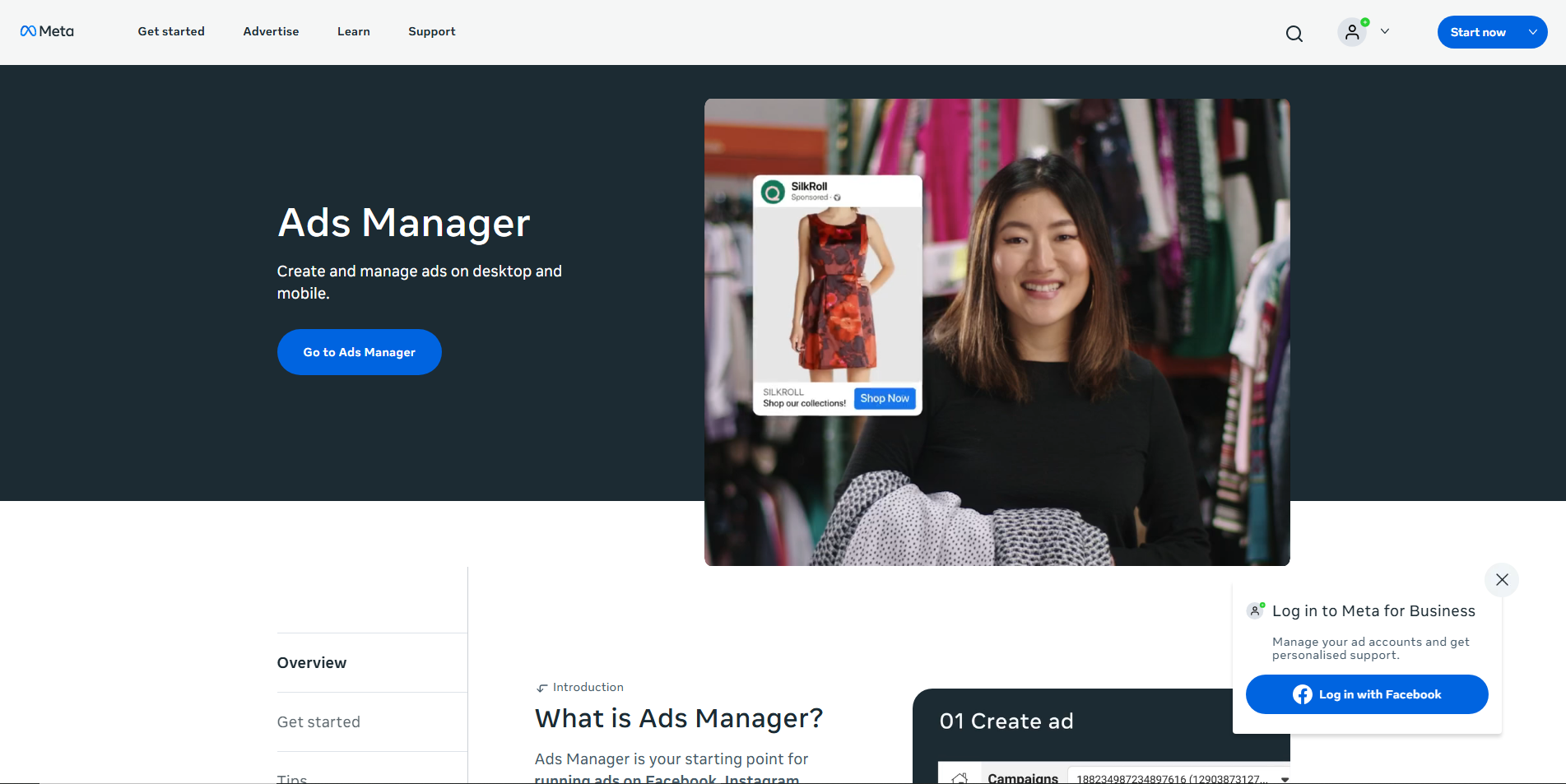
Facebook Ads remains one of the top-performing advertising platforms in 2026, enabling brands to reach billions of users across Facebook, Instagram, Messenger, and the Audience Network. Unlike search-based platforms, it focuses on demographic and behavioral targeting, allowing advertisers to reach people even when they’re not actively searching.
Through its integration with Instagram and Messenger, Facebook offers advertisers multiple high-engagement placements that drive visibility and conversions. The Audience Network extends reach beyond Facebook’s ecosystem, showing ads in third-party mobile apps and websites. This makes it ideal for brands focused on mobile or app-based audiences.
In 2026, Facebook Ads benefits from advanced AI optimization, precise audience segmentation, and improved real-time analytics. With flexible ad formats like carousels, slideshows, and videos, advertisers can deliver visually compelling campaigns across mobile and desktop at affordable costs.
Placements:
Facebook Feed, Instagram Feed, Messenger, and Audience Network
Mobile:
Facebook Audience Network and mobile placements on Facebook and Instagram
Ad Formats:
Carousel, slideshow, video, and single image; Audience Network supports native, interstitial, rewarded, and in-stream video formats
Pricing:
Costs depend on bidding strategy, estimated action rates, and ad quality; supports CPC, CPM, and CPA models
Pros:
- Excellent for precise demographic and interest targeting
- Highly engaging for visual and video content
- Strong exposure across Facebook and Instagram
- No keyword bidding required
- Cost-effective CPC rates for mobile and retargeting
Cons:
- Audience shifting toward an older demographic
- Some viewers may lack purchase intent
- Primarily B2C-focused platform
- Privacy concerns among some marketers
Note:
For the best performance, advertisers should leverage detailed targeting, retargeting, and lookalike audiences. These tools help refine campaign precision and reach highly specific groups that are most likely to convert.
5.Microsoft Advertising (Bing Ads):
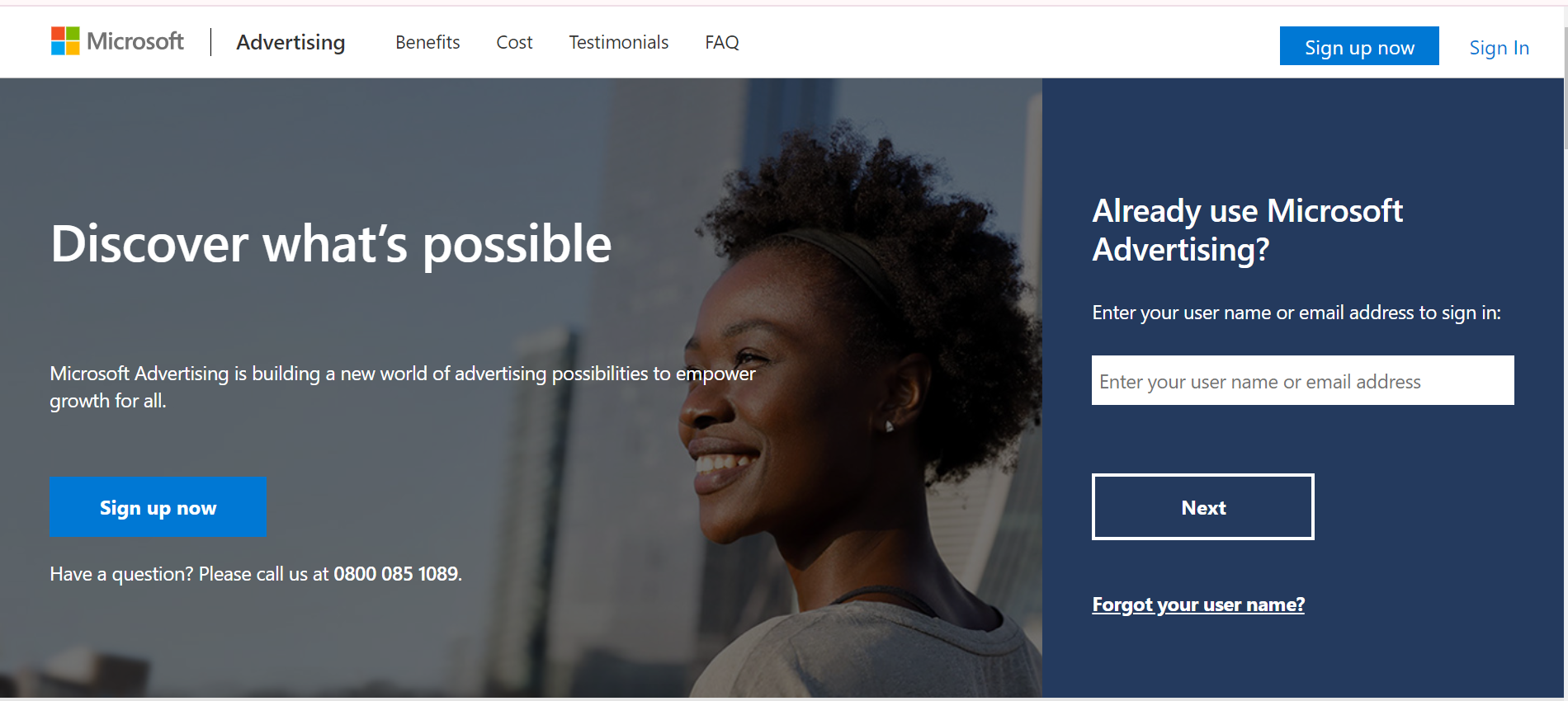
Utilizing the second-largest PPC network, Microsoft Advertising continues to offer strong advantages in 2026. The platform now includes AI-driven tools, conversational ad formats, and deeper integrations across search, native, and in-app placements.
Microsoft Advertising is a compelling alternative to Google Ads. It provides lower average CPCs, advanced targeting options, and access to major platforms such as MSN, Outlook.com, LinkedIn, Xbox, and the Edge browser audience. Its diverse network helps advertisers reach high-quality users while maintaining affordable costs.
Although its display partner network remains smaller than Google’s, the ability to advertise across MSN, Yahoo!, and Microsoft-owned platforms offers great value. Users within this ecosystem generally have higher purchase intent and household income, making it ideal for B2B and premium product advertising.
Placements:
Search engines, Edge browser, Outlook.com, MSN, LinkedIn-powered native placements, and select partner sites.
Ad Formats:
Responsive search ads, native ads, dynamic display, video, and shopping ads. AI-optimized bidding campaigns are also available.
Pricing:
CPC-based model with automated and AI-enhanced bidding strategies for improved performance.
Pros:
- Affordable CPC rates compared to Google Ads.
- Large search audience within the Windows and Edge ecosystem.
- Access to premium, high-intent users (especially in the U.S.).
- Strong mix of search, display, and native ad placements.
- AI tools enhance campaign optimization and targeting precision.
Cons:
- Smaller display partner network compared to Google.
- Click fraud risks still exist, though Microsoft has improved protections.
6.LinkedIn Ads:
LinkedIn, often known as “Facebook for professionals,” remains one of the most effective PPC platforms for B2B advertisers in 2026. It allows precise targeting of a professional audience that includes executives, entrepreneurs, marketers, and decision-makers with strong purchasing intent.
The platform provides advanced targeting options based on job title, company size, seniority level, skills, and industry. This makes it ideal for brands seeking high-quality leads or promoting business solutions, SaaS tools, and professional training programs. LinkedIn’s algorithm ensures that ads reach active users in relevant industries, maximizing engagement and conversion potential.
Advertisers can choose multiple ad formats such as sponsored content, Message Ads (InMail), dynamic ads, and text ads. InMail continues to be a powerful tool for direct outreach, allowing businesses to connect with potential clients through personalized communication. Although the cost per click is higher compared to Facebook or Google, the conversion quality justifies the investment for most B2B campaigns.
Placements:
LinkedIn main feed, LinkedIn Audience Network, mobile apps, and partner websites.
Mobile:
Ads appear on the LinkedIn mobile app and through the LinkedIn Audience Network.
Ad Formats:
Sponsored Content, Message Ads (InMail), Dynamic Ads, Text Ads, and Video Ads.
Pricing:
Operates on CPC, CPM, and CPS (Cost per Send) models. The average CPC starts around $2 but varies by competition and ad quality.
Pros:
-
Access to a high-value professional audience.
-
Highly accurate demographic and job-based targeting.
-
Effective lead generation for B2B campaigns.
-
Strong engagement for thought leadership and industry-related content.
Cons:
-
Higher CPC compared to most ad networks.
-
Primarily focused on B2B marketing, limiting B2C potential.
Note:
To maximize LinkedIn campaign performance, advertisers often use educational lead magnets such as eBooks, webinars, or whitepapers that align with the professional interests of their target audience.
7.Instagram:
Instagram remains one of the most visually engaging PPC ad networks in 2026, with over 1.5 billion active monthly users and a strong presence among younger demographics aged 18–35. Owned by Meta, Instagram Ads are managed through the same Facebook Ads Manager, providing seamless integration, cross-platform targeting, and performance tracking.
Advertisers benefit from a highly visual environment where photo, video, and carousel ads can drive exceptional engagement and brand awareness. Instagram’s algorithm prioritizes relevance and creativity, ensuring your content reaches users most likely to interact with it. With features like Reels Ads and Story placements, businesses can easily reach audiences during their most active browsing moments.
Instagram Ads work well for eCommerce, lifestyle, beauty, fashion, travel, and fitness brands — industries that rely heavily on aesthetic appeal. Businesses can choose between automated placements (recommended by Meta) or manual control over where ads appear across feeds, stories, reels, and explore pages.
Placements:
Instagram Feed, Stories, Reels, Explore Page, and mixed Meta placements with Facebook.
Ad Formats:
Single Image, Carousel, Video, Stories, Reels, and Collection Ads.
Pricing:
Operates on a CPC and CPM model. Costs vary based on audience, competition, and ad quality, typically ranging between $0.40–$1.00 per click for most industries.
Pros:
- Massive reach among younger audiences.
- Visually driven engagement ideal for lifestyle and retail brands.
- Integration with Meta Ads Manager for simplified targeting.
- Excellent ROI for influencer and brand awareness campaigns.
Cons:
- Performance depends heavily on creative quality.
- Costs can rise in competitive niches.
- Limited reach among older demographics.
Note:
Instagram performs best when advertisers focus on storytelling through high-quality visuals and short-form videos (Reels). Brands combining organic engagement with paid promotion often achieve the highest returns on the platform.
8.Pinterest ads:
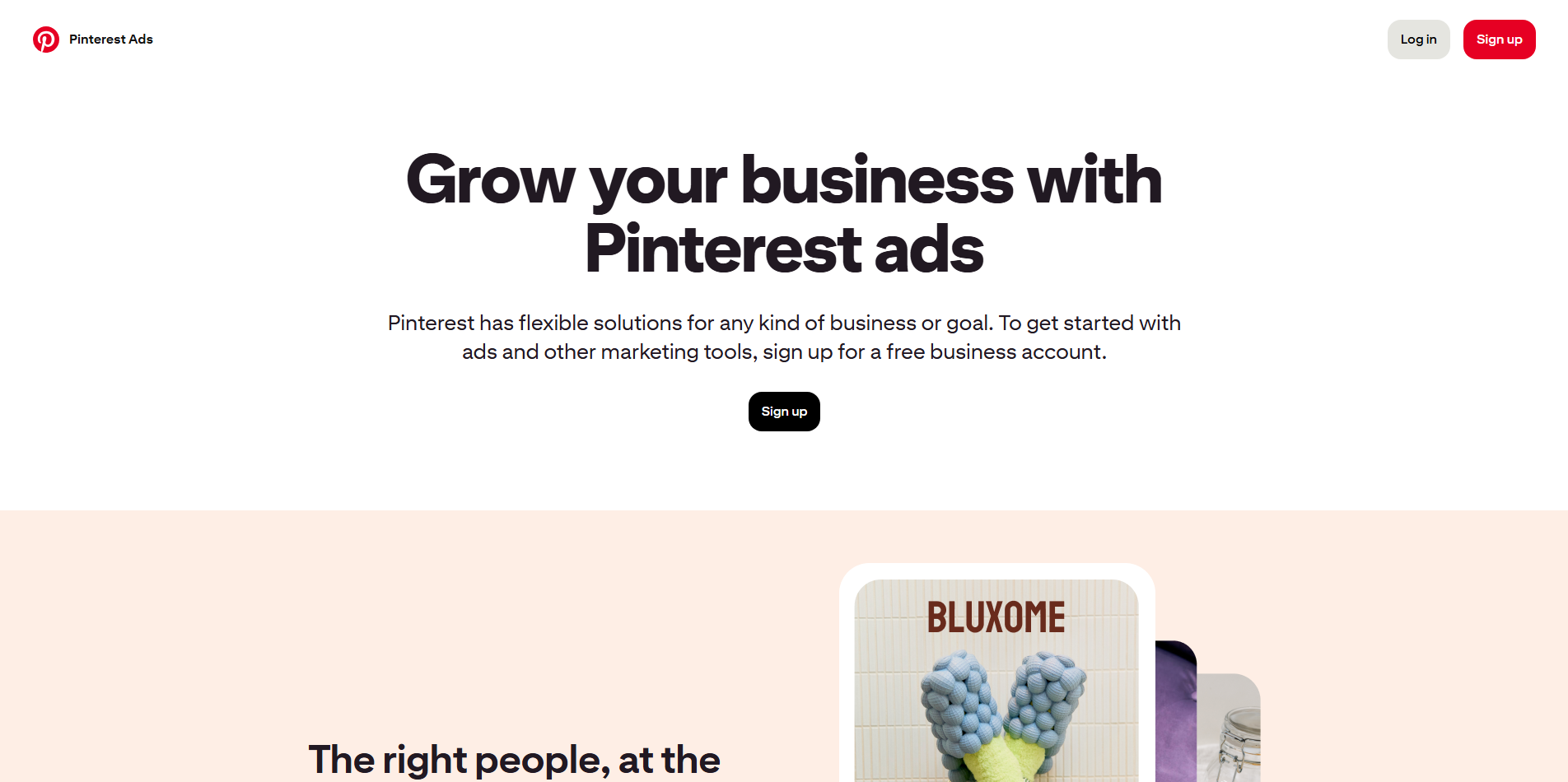
Pinterest is a highly visual discovery platform where people actively search for inspiration, ideas, and products to purchase. With over 200 million monthly active users, it serves as a powerful channel for advertisers to connect with consumers who have clear buying intent. Many users visit Pinterest to plan future purchases, whether it’s fashion, home décor, recipes, or lifestyle products.
A majority of Pinterest users — about 77% are women, and nearly 40% belong to households earning over $100,000 per year. This makes Pinterest an excellent choice for brands targeting an audience with strong purchasing power. The platform’s visual nature helps businesses showcase their products creatively and attractively.
Placements:
Ads appear across the Pinterest website and app, blending naturally within user feeds and search results for a seamless browsing experience.
Mobile:
Advertisements are displayed directly in the Pinterest app feed, making it easy to capture user attention during discovery.
Ad Formats:
Pinterest supports a range of engaging formats including one-tap promoted pins, cinematic pins, video pins, and promoted app pins, allowing advertisers to highlight products in visually appealing ways.
Pricing:
Pinterest offers flexible pricing models — CPC (Cost-per-Click) for promoted pins, CPM (Cost-per-Thousand-Impressions) for video ads, and CPI (Cost-per-Install) for app campaigns.
Note:
Pinterest’s search terms tend to be broader compared to Google, so thorough keyword research is essential. Since pins are saved and shared by users over time, advertisers can continue gaining exposure long after the campaign ends — making Pinterest a cost-effective platform for long-term visibility and brand growth.
9.X Ads (Formely Twitter):
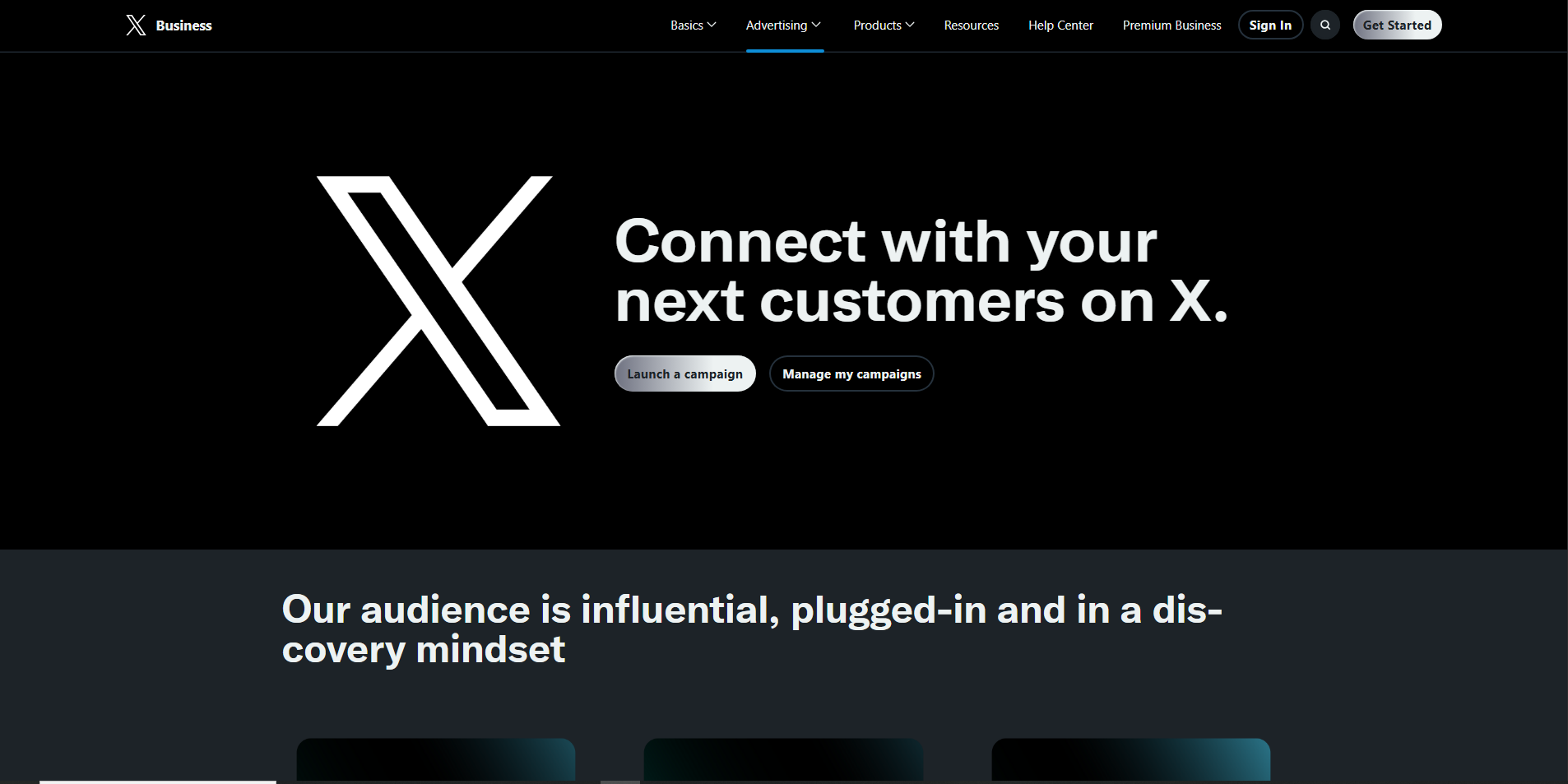
With over 330 million monthly active users, X (formerly Twitter) remains one of the most dynamic platforms for real-time engagement and conversation. It offers advertisers multiple ways to connect with audiences through trending topics, promoted posts, and hashtag-based campaigns. Unlike many other PPC platforms, X Ads operate exclusively within the X ecosystem — meaning your campaigns appear only on X’s website and mobile app, ensuring focused and engaged audience reach.
Promoted Posts are among the most versatile ad formats, allowing combinations of text, photos, GIFs, and videos to align with your campaign goals. These ads blend naturally into user feeds, enhancing engagement without feeling intrusive.
Placements:
X’s website and mobile app — ads appear directly in users’ timelines, search results, and profiles.
Mobile:
Ads are seamlessly integrated into the X app feed, offering high visibility and engagement among mobile users.
Ad Formats:
- Promoted Posts (text, image, GIF, video)
- Promoted Accounts (to increase followers)
- Promoted Trends (to boost visibility of hashtags or topics)
Pricing:
X follows a CPC (Cost-per-Click) model for promoted posts and accounts, while promoted trends are priced through X’s sales team on a custom basis.
Pros:
- One of the most affordable social media ad networks
- Allows precise demographic and interest targeting, including behavior and location
- Ideal for both B2B and B2C campaigns
- Hashtag campaigns can amplify brand reach and engagement
Cons:
- High competition and fast-moving content can reduce visibility
- Requires consistent engagement and quality content for strong performance
Note:
A well-planned engagement strategy is essential for success on X. While ads can boost reach and visibility, genuine interactions and high-quality content are what drive long-term conversions and audience loyalty.
10.Partners.House:
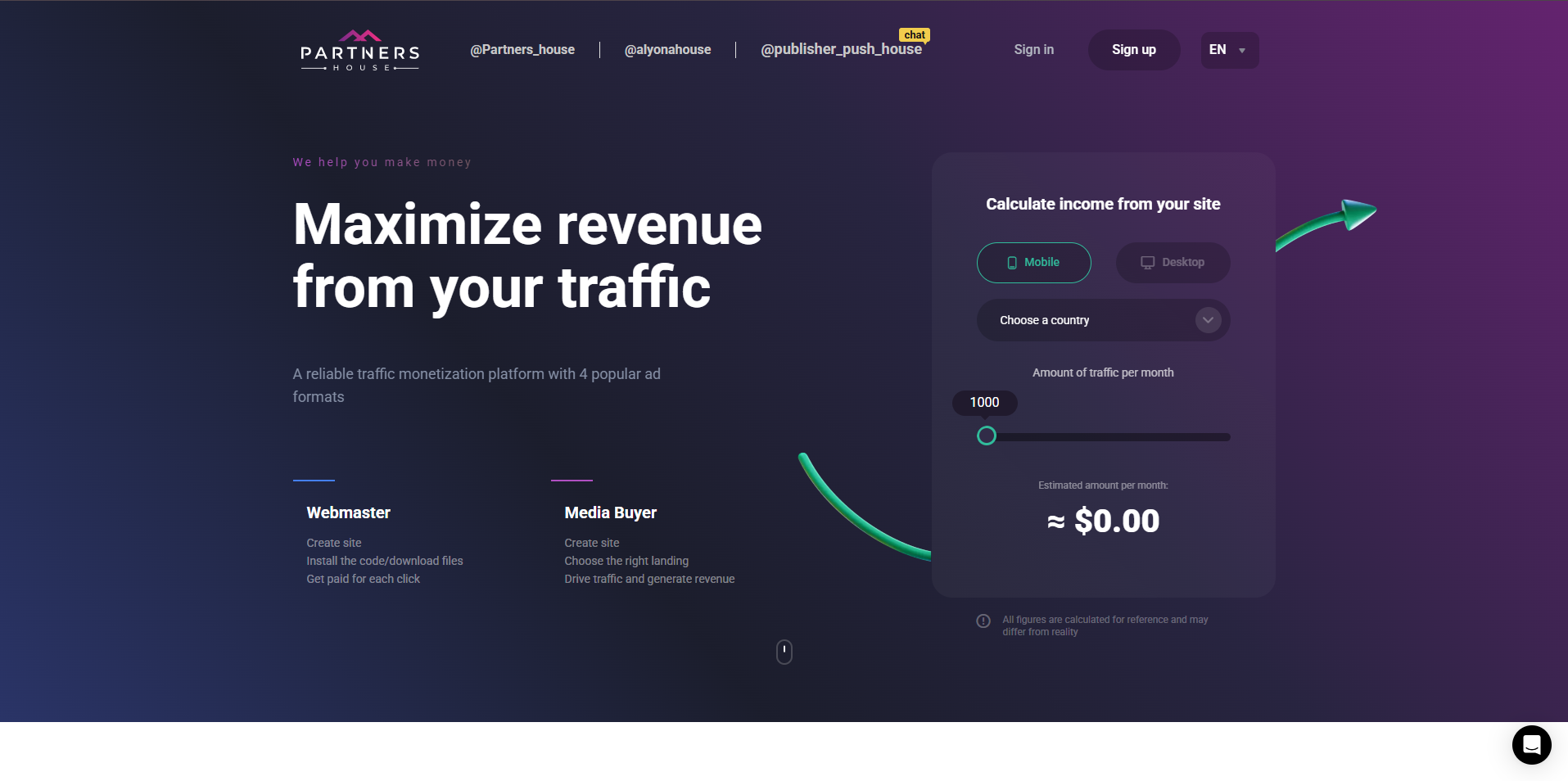
One of the most rapidly growing PPC ad networks, Partners.House was founded in 2019 and has quickly established itself as a trusted name among publishers and advertisers alike. Based in Slovakia, the network now operates in over 180 countries, serving a massive global audience. It specializes in push notification advertising, allowing website owners to earn passive income by monetizing their traffic effortlessly. With over 90 million active subscribers, Partners.House offers a powerful opportunity for publishers to grow their revenue through innovative, real-time ad delivery.
Partners.House is recognized for its high-quality monetization across 180+ GEOs, ensuring 100% ad delivery and cutting-edge optimization technology. Its smart algorithms and built-in fraud detection system actively monitor traffic quality, filtering out suspicious or invalid activity before it reaches your site. This helps maintain strong advertiser trust and ensures consistent, legitimate earnings for publishers. In addition, the network supports personalized push notifications, enabling businesses to deliver the right message to the right audience at the right time — enhancing engagement and conversions.
What truly sets Partners.House apart is its commitment to innovation and client growth. The team continuously adds new features and optimization tools to help advertisers and publishers achieve better results. Whether you aim to boost traffic, generate leads, or maximize conversions, Partners.House provides the flexibility and technology to support your goals. The onboarding process is also simple — users just need to sign up with basic details such as their name, address, and password, and they can start monetizing right away.
About Partners.House:
- Founded in: 2019
- Headquarters: Slovakia
- Allowed Countries: Almost all
- Minimum Payout: $50
- Payment Methods: WebMoney, ePayments, Bitcoin, VISA, MasterCard, Capitalist, Yandex.Money, and QIWI
Note: Partners.House is ideal for publishers seeking reliable and scalable monetization, especially through push notification formats. Its blend of advanced tech, fraud protection, and broad global coverage makes it one of the most dependable PPC ad networks available today.
11.AdRecover:
With the rising use of ad blockers, many advertisers struggle to reach their audience. AdRecover solves this by offering non-intrusive, user-consented ads that comply with acceptable advertising standards, allowing them to bypass most ad blockers. This makes it ideal for brands targeting users who avoid traditional ads, especially millennials, the group most likely to use ad blockers.
AdRecover’s ads are static or text-based, appearing “just above the fold” without slowing down page speed. They are clean, subtle, and designed to maintain a smooth browsing experience. The platform recommends a minimum monthly ad spend of $10,000, making it best suited for large or established advertisers aiming for high-quality, unblocked traffic.
Pros:
- Reaches ad-block users (mainly millennials)
- Subtle, non-disruptive ads
- High CTR and conversion rates
Cons:
- Not suitable for small budgets
- No banner or video ads
Note: Perfect for brands wanting ethical, ad-block-friendly PPC campaigns that balance visibility with user comfort.
12.AdRoll:
AdRoll is one of the largest and most effective retargeting ad networks, designed to convert casual site visitors into paying customers. It uses artificial intelligence (AI) to analyze user behavior across multiple channels and then strategically displays relevant ads to bring them back — whether on social media, email, or e-commerce platforms.
A key feature of AdRoll is BidIQ, its intelligent bidding system that studies audience data to secure the most cost-efficient ad placements. AdRoll also supports dynamic ads, showing users products similar to what they’ve previously viewed — an approach proven to significantly boost conversions. Additionally, it enables personalized email retargeting, which helps nurture potential buyers through direct engagement.
AdRoll is an excellent choice for brands wanting a unified retargeting strategy beyond Google Ads, especially for e-commerce and performance-driven campaigns.
Pros:
-
AI-powered retargeting across web, social, and email
-
Dynamic product ads for improved conversions
-
Cost-efficient automated bidding with BidIQ
Cons:
-
Complex setup; may require data expertise
-
Limited control over manual bidding
-
Pricing varies based on campaign scope and goals
Note: Ideal for e-commerce businesses aiming to reconnect with visitors and maximize conversions through smart automation.
13.Reddit Ads:
Reddit, often known as the “front page of the internet,” has evolved into a powerful PPC advertising platform for reaching niche audiences. With over 330 million active users monthly, it offers unique opportunities for both B2C and B2B marketing. Users visit Reddit for everything from sharing memes to discussing serious investment topics, making it a goldmine for interest-based targeting.
Ads on Reddit appear as “sponsored posts” that blend naturally with user content, typically displayed in subreddit feeds or the main newsfeed — much like native ads. The platform’s CPM rates start as low as $1.50, making it one of the most affordable PPC networks available. Advertisers can target users by interests, communities, and location, allowing for precise audience segmentation.
While Reddit’s ad performance can vary depending on the niche, its untapped potential and low-cost targeting options make it worth testing, especially for brands seeking engaged communities.
Pros:
-
Cost-effective ad network with low CPM rates
-
Excellent community and interest-based targeting
-
Less competition compared to other social platforms
Cons:
-
Mixed results in ad performance
-
Some niches may perform better through organic subreddit engagement rather than paid ads
Note: Reddit is ideal for advertisers who understand community culture and can create authentic, conversational ad content that resonates with users.
14.RevContent:
RevContent is a native advertising and content recommendation platform similar to Taboola and Outbrain, known for delivering sponsored articles and suggested content across partner websites. While its network may not include many premium publishers, it boasts a strong U.S. audience reach and is recognized as one of the fastest-growing native ad networks globally.
With its relatively low competition, RevContent is ideal for advertisers looking to scale campaigns in a less crowded environment. The platform’s average CPC is around $0.44, comparable to Taboola, making it a cost-effective choice for advertisers seeking traffic through content-driven promotions.
Despite its growth, some users report that RevContent ads can appear spammy if not well-optimized. Still, for businesses aiming to increase visibility through native placements and content discovery, it offers solid potential.
Pros:
-
Fastest-growing native PPC ad network
-
Low competition for advertisers
-
Wide range of partner sites for content distribution
Cons:
-
Some reports of spammy ad placements
-
CPC may be high considering the network’s limited premium inventory
15.Outbrain:
Taboola now owns Outbrain, making them essentially part of the same ecosystem. Both platforms focus heavily on content marketing and feature a wide range of premium publisher websites.
The main difference lies in reach and audience engagement. Taboola generally drives more traffic through major publishers like Forbes and Business Insider, while Outbrain ensures visibility on top media sites such as CNN, The Guardian, Wired, and Cosmopolitan.
Advertisers often find Outbrain more affordable, with an average CPC of around $0.10, compared to Taboola’s $0.45. Both offer solid targeting and analytics tools for content promotion.
Pros:
- Access to a wide range of premium publisher sites
- Strong audience engagement and targeting options
- Lower CPC than most major ad networks
Cons:
-
Some users may consider sponsored content less credible or too commercial
16.Taboola:
You’ve definitely seen Taboola on your favorite news website. It is the first of the specialized native advertising platforms on our list. Their area of expertise is sponsored content, which blends nicely with any news stories or other content that their partner websites may present.
It’s comparable to the Display Network and Google AdSense; however, it only works with a select group of websites.
How exactly does this benefit marketers?
Taboola is a cost-efficient and practical choice if you desire your business to be seen on websites like Business Insider, Forbes, or the New York Times. You must produce content that is compelling and intended to promote without being spammy. Creating a blog post or news story about your goods or services is required in this case.
You have two pay-per-click options: CPC or CPM.
Taboola is one of the least expensive PPC ad network solutions, with an average CPC of only a few pennies. Taboola differs from Google’s Display Network/Adsense in that the websites that are part of its network must be high caliber. This means that all of Taboola’s network’s websites receive more than one million visitors per month, unlike Google AdSense sites, which can receive just about any traffic volume.
Pros:
- Designed for content marketing
- CPC is low in comparison to other ad networks.
- high-quality websites that receive a lot of traffic
- based on prior internet clicks by individuals, useful for remarketing
Cons:
- You’ll need to be on top of your content marketing game.
- Some people consider this content to be intrusive or spam.
How do you select what fits you best?
We understand your concern. How do I pick the best ad network for my website as a publisher? The first consideration is if you want your viewers to identify with the advertisement featured on your website. As we’ve seen, advertisers have a lot of options for ad networks, so picking the ideal one isn’t always easy. Google Ads, which offers the largest ad search engine and the most diverse display network, is by far the finest all-rounder.
Nevertheless, this list may have given you some options if you’re seeking a platform to target a certain demographic or a PPC ad channel with less competition. For instance, LinkedIn Ads can be your perfect idea if you’re aiming to reach business professionals. Or perhaps one of our suggestions can help if you’re considering implementing native content PPC ads.
Conclusion
Selecting the right ppc ad network depends on your marketing goals, target audience, and budget. While Google Ads remains the most versatile and widely used platform, others like LinkedIn Ads, RevContent, and Reddit Ads offer unique advantages for specific niches. For instance, LinkedIn works best for professional audiences, while networks like Taboola and Outbrain are great for content-based advertising.
Ultimately, there’s no single “best” ppc ad network for everyone. The key is to experiment with different platforms, monitor performance, and focus on the one that brings the highest-quality traffic and conversions. By testing strategically and aligning your ad campaigns with audience behavior, you can find the perfect network that maximizes your ROI and supports long-term growth.
Frequently Asked Questions (FAQs)
What is a PPC ad network?
A PPC (Pay-Per-Click) ad network connects advertisers with publishers, allowing advertisers to display ads on websites and pay only when a user clicks on their ad. It helps publishers earn revenue and advertisers reach targeted audiences efficiently.
Which PPC ad network is best for beginners?
For beginners, Google Ads is often the best starting point due to its massive reach, user-friendly interface, and advanced targeting options. Other good options include RevContent for native ads and Reddit Ads for niche audience targeting.
What is the difference between Taboola and Outbrain?
Taboola and Outbrain are both native advertising platforms that promote content through sponsored recommendations. Since Taboola acquired Outbrain, they function similarly, but Taboola tends to offer broader reach, while Outbrain is known for its high-quality publisher network.
How much does PPC advertising cost?
PPC costs vary depending on the network and competition in your niche. For example, Outbrain averages around $0.10 per click, Taboola around $0.45, while Reddit Ads start at $1.50 CPM. Costs depend on audience, location, and ad quality.
How can I choose the right PPC network for my website?
Choose a PPC network based on your audience, goals, and content type. If your site has a professional audience, try LinkedIn Ads. For viral or entertainment content, RevContent or Taboola might perform better. Always test and compare performance before scaling up.
Are PPC networks worth it for small publishers?
Yes, if chosen wisely. Some networks like RevContent or Reddit Ads have lower competition and affordable pricing, making them suitable for smaller publishers who want to earn consistent ad revenue.
Can I use multiple PPC ad networks at the same time?
Yes, many publishers use more than one network to maximize earnings. However, ensure that the networks you use don’t conflict with each other’s policies and that your site’s loading speed remains unaffected.
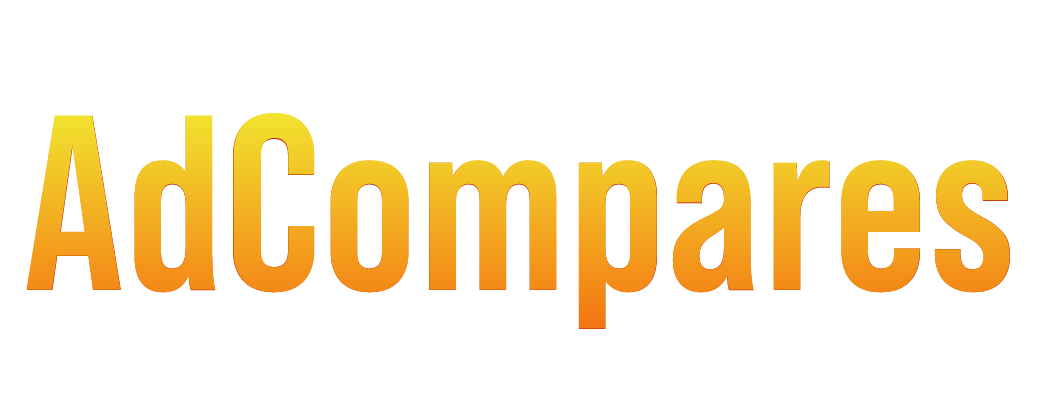
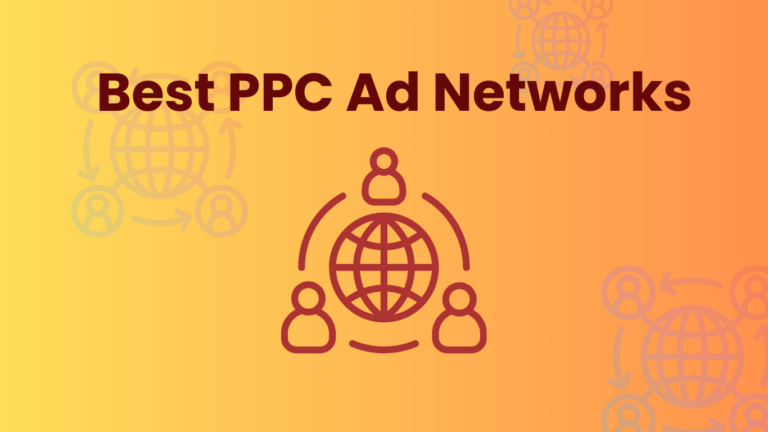
No Comments
https://t.me/s/ef_beef
Your comment is awaiting moderation.